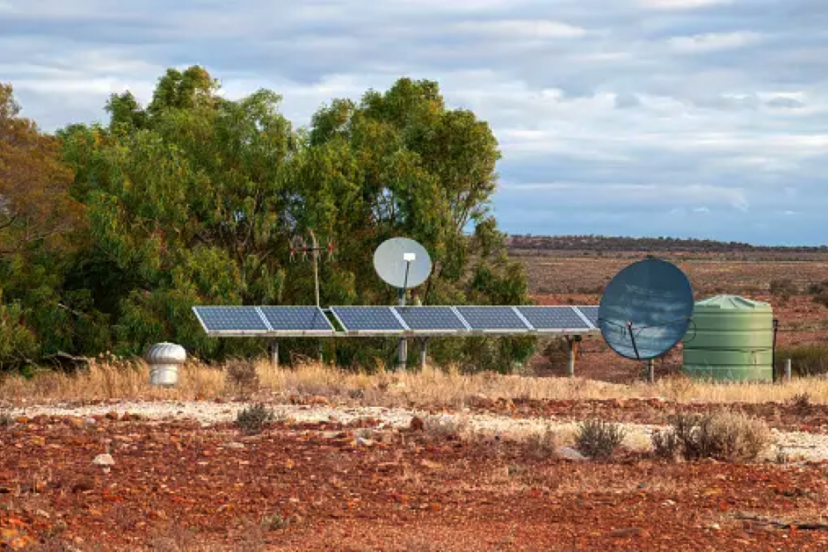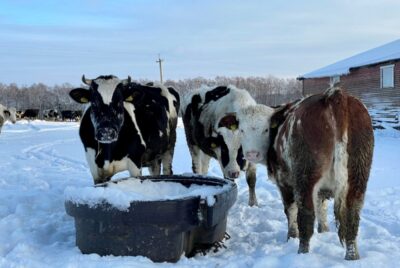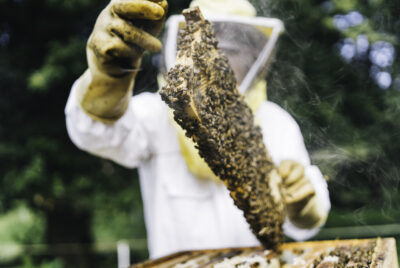Homesteading Off The Grid
"We may earn a commission from purchases made using our links. Please see disclaimer."
Living a Self-Sufficient Life in Harmony with Nature by Homesteading Off The Grid
Introduction
I consider myself somewhat of an expert on Homesteading Off The Grid. You see I lived on a farm for 7 years where we produced our own electricity, grew our own food, and stored our own water. Because of this experience, I am passionate about sharing the joys and benefits of embracing a self-sufficient lifestyle. Homesteading off the grid, in general, refers to the practice of living independently, relying on renewable resources and sustainable practices, and disconnecting from the traditional power grid. In this article, I will explore the key aspects of homesteading off the grid, its advantages, and how you can embark on this fulfilling journey.
Benefits of Homesteading Off The Grid
Homesteading off the grid offers a plethora of benefits that go beyond the mere act of disconnecting from public utilities. By embracing this lifestyle, you gain autonomy and freedom in shaping your own destiny. Here are some compelling reasons why homesteading off the grid is becoming increasingly popular:
- Self-Sufficiency: Homesteading allows you to become self-reliant, producing your own food, generating your own energy, and meeting your basic needs without external dependencies. A homestead can function as its own closed ecosystem, with the land and resources on-site providing for all necessities.
- Environmental Stewardship: Living off the grid minimizes your carbon footprint as you rely on renewable energy sources, practice sustainable farming, and reduce waste. The small-scale and ecologically-minded practices of homesteading create harmony between people and the environment.
- Financial Independence: By reducing your reliance on commercial goods and services, you can significantly cut down on expenses, leading to financial freedom and reduced stress. Homesteading eliminates the hidden costs and markups of consumerism, allowing you to live frugally and invest money into your land and home.
- Closer Connection to Nature: Homesteading off the grid provides an opportunity to reconnect with the natural world, fostering a deeper appreciation for the environment and its resources. Time spent outdoors doing homestead chores creates an intimate relationship with your surroundings unmatched by modern city life.
Getting Started
Embarking on the homesteading journey requires careful planning and preparation. Here are some crucial steps to help you get started:
Choosing the Right Location
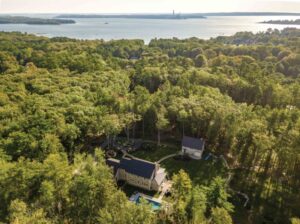 Selecting an ideal location for your homestead is paramount. Look for areas with abundant natural resources, suitable climate, and fertile soil. Consider factors like proximity to amenities, access to water sources, and local regulations that may impact your homesteading plans. Research locations thoroughly, as your homestead’s success depends on choosing land with the natural features needed for self-sufficiency.
Selecting an ideal location for your homestead is paramount. Look for areas with abundant natural resources, suitable climate, and fertile soil. Consider factors like proximity to amenities, access to water sources, and local regulations that may impact your homesteading plans. Research locations thoroughly, as your homestead’s success depends on choosing land with the natural features needed for self-sufficiency.
Conduct in-depth research on climate patterns, growing zones, and weather risks to select a location suited for off-grid homesteading. Visit potential sites in person across seasons to assess the land and resources firsthand before making a commitment. Prioritize locations boasting rich soil, clean water, timber, and wildlife to provide for your basic needs long-term.
Weigh proximity to emergency services, doctors, and supplies when choosing a remote homestead site. Account for future climate change by picking an area likely to remain livable as weather patterns shift.
Assessing Resources and Needs
 Take stock of your resources, skills, and needs. Evaluate your energy requirements, water needs, and food production capabilities. This assessment will help you determine the scale and scope of your homesteading venture. Creating detailed lists of your resources and projected needs provides clarity on how to design a thriving off-grid homestead.
Take stock of your resources, skills, and needs. Evaluate your energy requirements, water needs, and food production capabilities. This assessment will help you determine the scale and scope of your homesteading venture. Creating detailed lists of your resources and projected needs provides clarity on how to design a thriving off-grid homestead.
Take an honest inventory of your skills to shape plans aligned with your current abilities and areas needing development. Research and estimate costs for equipment, tools, livestock, seeds, and other startup needs when budgeting. Outline resources available onsite such as existing structures, equipment, or natural features to build upon.
Factor in needs like access to healthcare, education, and community when gauging your self-sufficiency. Re-evaluate needs and resources annually as your homestead matures and skills improve over time.
Developing a Self-Sustaining System
To thrive off the grid, you need to establish a self-sustaining system. This involves integrating various essential skills to create a harmonious ecosystem on your homestead. Let’s explore these skills in detail. A resilient homestead seamlessly combines housing, gardening, livestock, energy and water systems into a closed loop.
Aim for diverse and complementary components that fulfill needs without external inputs. Start small and simple when establishing systems, expanding and improving over time as skills develop. Design redundancy into essential systems like water and energy to safeguard against disruptions or failure.
Strive for circular flows where the outputs of one system become inputs for another. Continuously monitor your systems’ efficiency and make upgrades to increase self-sufficiency.
Essential Skills
Homesteading off the grid requires a diverse range of skills to ensure your self-sufficiency and survival. Here are some key skills you should develop:
Building and Construction

Learn basic construction techniques to build your own infrastructure, including housing, sheds, and outbuildings. Familiarize yourself with carpentry, plumbing, and electrical work to tackle necessary repairs and improvements. Hands-on experience with building projects equips you to construct and maintain all structures needed for an off-grid homestead.
Gardening and Farming
Master the art of growing your own food. Learn about organic gardening practices, crop rotation, garden layout, companion planting, and soil management. Explore livestock rearing and beekeeping if feasible for your homestead. Nurturing crops and animals requires learning agroecology principles tailored specifically to your land and climate.
Energy Generation and Management
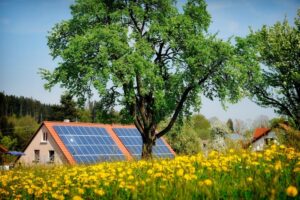
Investigate alternative energy sources such as solar panels, wind turbines, or hydroelectric power. Understand the principles of energy storage and management to ensure a reliable power supply. Research and invest in renewable energy systems able to provide sufficient, sustainable power year-round.
Water Collection and Purification
Explore methods of collecting rainwater and implementing efficient irrigation systems. Familiarize yourself with water purification techniques to ensure a safe and sustainable water source. Harvest nature’s abundance by capturing rainwater and purifying it for all household and homestead needs.
Food Preservation Techniques

Learn various food preservation methods like canning, fermenting, dehydrating, and freezing. These techniques will help you store food for longer periods, reducing waste and ensuring a year-round supply. Preserve seasonal bounty through time-tested methods to enjoy homegrown produce all year long.
Emergency Preparedness
Prepare for unforeseen circumstances by building emergency supplies, creating evacuation plans, and acquiring first aid knowledge. Homesteading off the grid demands resilience and preparedness. Develop self-reliance skills like basic medical care along with contingency plans for emergencies or natural disasters.
Establishing a Homestead
Once you have acquired the necessary skills and identified your resources, it’s time to establish your homestead. Consider the following steps:
Securing Land and Legal Considerations
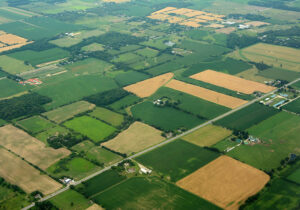
Research local regulations and zoning laws to ensure your homesteading activities align with legal requirements. Purchase or lease land that meets your needs and complies with relevant regulations. Invest time into finding land ideal for off-grid living that also meets all legal zoning and code requirements.
Designing Your Homestead Layout
Design a layout that maximizes efficiency and sustainability. Plan the location of your dwelling, garden beds, livestock areas, and energy systems. Consider factors like sunlight exposure, wind direction, and water access. Create a homestead map optimizing the placement of infrastructure based on natural features and relationships between components.
Building Infrastructure and Shelter
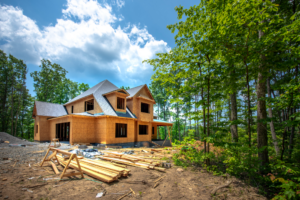 Construct the necessary infrastructure on your homestead, including your residence, storage facilities, and livestock shelters. Utilize your building and construction skills or enlist the help of professionals if needed. Erect eco-friendly, efficient buildings and systems that will serve as the foundation of your self-reliant homestead.
Construct the necessary infrastructure on your homestead, including your residence, storage facilities, and livestock shelters. Utilize your building and construction skills or enlist the help of professionals if needed. Erect eco-friendly, efficient buildings and systems that will serve as the foundation of your self-reliant homestead.
Design structures customized specifically for your land, climate, and homesteading activities. Employ passive solar techniques, insulation, and natural cooling methods to create efficient buildings. Use local and sustainable materials like earth, straw, and stone to minimize environmental impact.
Plan adequate storage for tools, supplies, livestock feed, and preserved food. Site and orient buildings strategically based on factors like sunlight, drainage, and access.
Sustainable Living
Living off the grid comes with the responsibility to adopt sustainable practices. Here are some essential steps to foster an eco-friendly lifestyle on your homestead:
Implementing Eco-Friendly Practices
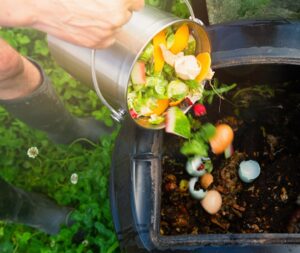 Embrace green living by using natural and biodegradable products, minimizing waste, and adopting eco-friendly technologies. Reduce, reuse, and recycle to create a sustainable environment. Commit to low-impact systems and products that nurture the land and conserve resources for future generations. Seek out non-toxic, natural alternatives for household cleaners, toiletries, and other supplies.
Embrace green living by using natural and biodegradable products, minimizing waste, and adopting eco-friendly technologies. Reduce, reuse, and recycle to create a sustainable environment. Commit to low-impact systems and products that nurture the land and conserve resources for future generations. Seek out non-toxic, natural alternatives for household cleaners, toiletries, and other supplies.
Conserve gas by walking, biking, or using eco-friendly transportation methods whenever possible. Switch to LED lights, install timers, and unplug devices to reduce energy use. Choose durable, long-lasting products to avoid excess waste and consumption. Support green companies and avoid unethical brands that harm the environment.
Composting and Waste Management
Implement a composting system to recycle organic waste, enrich your soil, and reduce the need for chemical fertilizers. Embrace a zero-waste mindset and explore creative ways to repurpose or recycle items. Closing the loop through composting turns “waste” into fertile soil, eliminating the need to bring in outside inputs.
Renewable Energy Sources
Harness the power of renewable energy by installing solar panels, wind turbines, or other alternative energy sources. Reduce reliance on fossil fuels and contribute to a cleaner environment. Solar, wind, and microhydropower can sustainably meet an off-grid home’s energy needs year-round.
Conservation and Reducing Consumption

Practice mindful consumption by conserving resources, minimizing water usage, and embracing energy-efficient appliances. Make conscious choices to reduce your ecological footprint. Living lightly on the earth by reducing needs and wants is central to maintaining long-term balance on a homestead.
Community and Support
Building a network of like-minded individuals is invaluable on your homesteading journey. Seek support, knowledge, and camaraderie through the following avenues:
Connecting with Like-Minded Individuals
Join homesteading communities, both online and offline. Participate in forums, social media groups, and local meetups to connect with fellow homesteaders, exchange ideas, and gain valuable insights. Tap into the collective wisdom of the homesteading community by building relationships rooted in mutual support.
Learning from Experienced Homesteaders
Tap into the wisdom of experienced homesteaders. Attend workshops, seminars, and homesteading conferences to learn from their successes and challenges. Mentors can provide guidance and advice tailored to your specific needs.
Gain priceless firsthand knowledge by learning from veteran homesteaders’ triumphs and tribulations. Ask targeted questions to learn best practices and avoid pitfalls when consulting mentors. Shadow mentors on their homesteads to gain hands-on experience with their techniques.
Connect with several experienced homesteaders to get diverse perspectives on methods. Learn from local elders’ generational knowledge of the land, plants, and animals in your region. Remain open-minded but evaluate advice critically before adopting recommendations.
Sharing Resources and Knowledge
 Create a culture of sharing within the homesteading community. Exchange surplus produce, share tools and equipment, and offer guidance to newcomers. Collaborative efforts can enhance everyone’s homesteading experience. Generously share your unique skills and resources to promote resilience and interdependence among homesteads.
Create a culture of sharing within the homesteading community. Exchange surplus produce, share tools and equipment, and offer guidance to newcomers. Collaborative efforts can enhance everyone’s homesteading experience. Generously share your unique skills and resources to promote resilience and interdependence among homesteads.
Challenges and Rewards
Homesteading off the grid comes with its share of challenges, but the rewards are immeasurable. Here are some common obstacles you may encounter:
Overcoming Obstacles
Homesteading requires hard work, dedication, and perseverance. Be prepared for setbacks, weather-related challenges, and the steep learning curve associated with acquiring new skills. Embrace a problem-solving mindset and adaptability.
Persistence and optimism help turn missteps into opportunities for growth on the rich but demanding homesteading path. Develop grit and mental stamina to push through grueling manual labor and setbacks. Troubleshoot issues methodically using both research and input from mentors. Make time for reflection and self-care to avoid burnout during demoralizing challenges.
View failures as teachers on the winding road towards mastery and self-sufficiency. Celebrate small daily accomplishments to find joy amid difficulties on the homesteading journey.
Enjoying the Freedom and Self-Sufficiency
 Despite the challenges, homesteading off the grid offers unparalleled freedom and self-sufficiency. Revel in the joy of growing your own food, generating your own power, and living in harmony with nature.
Despite the challenges, homesteading off the grid offers unparalleled freedom and self-sufficiency. Revel in the joy of growing your own food, generating your own power, and living in harmony with nature.
The satisfaction of providing for yourself and connecting deeply with the natural world makes the homesteading struggle worthwhile. Savor the feeling of abundance when harvest time arrives after months of nurturing crops. Find peace in the privacy and solitude of living remotely immersed in nature.
Appreciate the luxury of dictating your own schedule and work rhythms. Take pride in new self-reliance skills and the ability to fix, build, and maintain your homestead. Wake up eager each day knowing your time benefits your family directly, not an employer.
Conclusion
Embarking on a homesteading journey off the grid is an enriching experience that allows you to reconnect with nature, become self-sufficient, and make a positive impact on the environment. By selecting the right location, developing essential skills, and embracing sustainable practices, you can create a thriving homestead that brings fulfillment and resilience.
FAQs
1. How can I start homesteading off the grid with limited funds?
Starting small and gradually expanding your homestead allows you to manage costs effectively. Begin with essential skills like gardening and focus on projects that provide immediate returns on investment, such as energy-efficient upgrades.
2. Is homesteading off the grid legal everywhere?
Laws and regulations regarding off-grid living vary by jurisdiction. Research local zoning laws, building codes, and permits to ensure compliance with legal requirements. Consulting with local authorities or experienced homesteaders can provide valuable guidance.
3. How do I ensure a reliable source of food on my homestead?
Establishing diverse food production systems, such as vegetable gardens, fruit orchards, and livestock rearing, will provide a consistent source of food. Implement food preservation techniques to extend the availability of fresh produce throughout the year.
4. What are some common mistakes to avoid when starting a homestead?
One common mistake is overextending yourself by taking on too many projects at once. Start with manageable tasks and gradually expand. Additionally, underestimating the time and effort required for specific projects can lead to frustration. Research and plan thoroughly before undertaking any major endeavor.
5. Can I homestead off the grid while still maintaining a job?
Yes, many homesteaders successfully balance off-grid living with part-time or remote work. Prioritize your time and energy, and establish systems that allow you to manage both your homestead responsibilities and employment commitments effectively.

